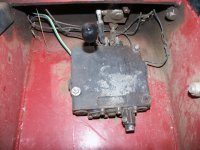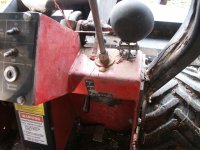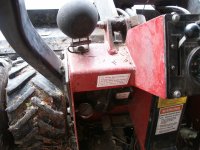I have a very basic question to ask. What is the difference between various valve spool controls. I am looking to add another remote, and there appears to be 4 different types (or at least they are labeled that way).
Log Splitter Valve
Motor Spool Valve
Control Valve (the most common)
Electric control valve
Log Splitter valves seem to be the cheapest, and motor spools the most expensive.
I get what electric is (although I have a question, can you "feather" an electric valve - meaning slowly let the juice flow for precision work or is it just on and off)
Can anyone help a layman get through these vageries?
Thanks
Here is my 2 cents.....for now....lol
The valve an operator uses to control an actuator (cylinder or motor), is a control valve, directional control valve etc....many names on the same thing....all these valves you are mentioning are control valves.....
A log splitter valve is a control valve, often with some extra features like auto cycle and/or detent. log splitter valves are hand operated, and they direct a flow, that is "proportional" to how much you move the spool.....
The opposite to a proportional valve is an "on-off" valve, in which the spool only can take two positions, either neutral or fully "open" work port. Most electric solenoid valves you see on equipment is "on-off"- control valves. You operate them with an electric switch, or they are operated automatically by a electric control system.
There are proportional electric valves, the are controlled by an electric amperage, that is proportional to an operator "signal" or electric lever movement (joystick). This amperage, is usually created by a PLC (Programmable Logic Controller ) unit that sends out a PWM (Pulse Width Modulated) amperage to the electric solenoid (especially designed for proportional control valves). These Proportional hydraulic control valves are expensive.
All hydraulic control valves can be set up for different characteristics. This is made by different spool design. Usually the valve housing is the same and the spool design varies with type of system to work in, like an Open Center system, Closed center system, Load Sensing system etc. Even different type of actuator setup requires different spool design, like motor spool, regenerative spool, 3 way spool for single acting cylinder , 4 position spool with float etc etc. There are also variations in how spools overlap the ports when opening and closing for flow. All these things combined makes it possible to have hundreds of different spools for different purposes. And they all can be fit in the same housing, together with some extra control accessories, like power beyond plugs, and detent controls etc.
A motor spool valve has its special feature in neutral position. If we go back to a regular spool for a double acting actuator (cylinder), that spool keeps both work ports closed in neutral. The actuator can not move when valve is in neutral. Many hydraulic motor applications require the motor to be "unlocked" when control valve is in neutral. A hydraulic wire winch is an example, it will need a spool for bi directional motor control, but with valve in neutral, we might want to be able to pull out the wire by hand, or roll it back on to the drum by hand. Then the motor have to be "unlocked" in neutral. That is made by using a "motor spool" in the valve. With a one directional motor this can be solved with a check valve between the two work ports.
Such check valve is also used to let a motor, with inertia on the shaft, slow down by it self when control valve, suddenly, is in put into neutral. Other wise this rotating inertia will create a "pressure pump" of the motor, and oil wont have any where to go. An example could be a large diameter, heavy mass, circular saw.
The reason a log splitter valve is cheapest, is that it is a "low quality" control valve. You do not put a 1500$ control valve on a 1000$ log splitter......
As I explained above, you need some advanced electronic to "feather" an electric control valve. You also need a especially designed electric control valve for this. So don't expect a regular on-off solenoid valve be "feathered" by changing supply voltage. It takes a little more than that.

This
Prince Serie 20 valve pdf file shows how a system of spools are used in one housing depending on valve purpose...page V6....have fun...






